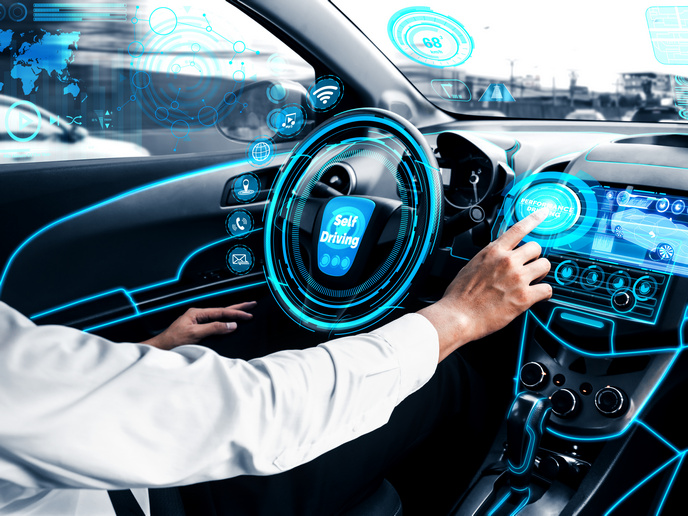Developing the technology to put autonomy in the driver’s seat
The modern car is often likened to a computer on wheels, with advanced driver assistance systems (ADAS) representing just a glimpse of its potential. As advanced sensor systems and sensor fusion continues to progress, our cars will soon shift towards full automation. The problem is that current vehicle radar sensors lack the necessary bandwidth to meet the complex demands of safe autonomous vehicle operations. While the sub-terahertz (THz) frequency spectrum, which ranges from 150 to 300 gigahertz (GHz), holds potential for this kind of radar communication, it requires micro devices capable of transmitting, receiving and networking the sub-THz frequency. Enter the EU-funded car2tera.eu (Car2TERA) project. “Car2TERA is leading the way to developing sub-THz, large-bandwidth technologies for advanced in-cabin sensor systems, sensor fusion and high-speed data links,” says Barbara Gaggl, project manager at TECHNIKON(opens in new window), an Austrian research services company.
A technical success
The project’s technical success, driven by its diverse research team’s competencies, led to the development of TRL 4 demonstrators in two promising new application scenarios: short-range car-radar sensors for real-time passenger monitoring and short-distance THz-over-plastic data links. “These advancements effectively address the intricate challenges associated with safe autonomous driving and mobile robot operations,” explains Gaggl, who also served on the project’s coordination team. One of the project’s key developments was a novel, miniaturised sub-THz beam-forming front end. Not only does the solution utilise an innovative micromachined waveguide system integration technology, it can also switch beam-shape. “One application for this technology is in-cabin passenger monitoring, which is the fastest growing car sensor market,” notes Gaggl. “We are confident that our solution will help enable individual and real-time adjusted crash mitigation measures and vital-sign detection.” Researchers also developed a new plastic-microwave fibre interface that enables the cost-efficient, high-performance coupling of industrial grade silicon-germanium (SiGe) monolithic-microwave integrated circuits (MMIC), or graphene MMIC technology. “These short-distance, high data-rate THz-over-plastic data links for telecommunication radio-access and backbone networks will facilitate the data growth demanded by 5G and will ultimately replace costly and unreliable fibre links,” remarks Gaggl. These components, amongst others, were compiled into a prototype 240 GHz automotive radar. The TRL 4 prototype successfully demonstrated the feasibility of sub-THz smart electronic systems based on the latest semiconductor, microsystem and nano-electronic technologies.
Expanding Europe’s competitive edge
Beyond advancing the state of the art in next-generation smart automotive electronic systems, the Car2TERA project also contributed to strengthening European industrial leadership in car radar and emerging, affordable sub-THz technologies. In doing so they boost Europe’s presence in the competitive smart electronic sensor systems market. According to Gaggl, European car module manufacturers hold a 79 % market share on car radars, while European semiconductor manufacturers claim a 90 % share of the car-radar chipset market. “Car2TERA extends Europe’s success story on advanced, smart electronic sensor systems into the sub-THz frequency spectrum,” she says. Furthermore, the short-range, sub-THz frequency radar technology developed during the project will enable such emerging applications as in-cabin sensing. “From car safety to high-speed data links, Car2TERA pushed the boundaries of European research to the next level,” concludes Gaggl.







